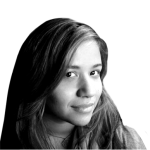
Lunchtime Links: A Mobile App for Collecting Nonprofit Donations
A new app from Google aims to make collecting nonprofit donations quick and easy. Also: why traditional lectures still have a place in conference education.
Collecting nonprofit donations is tough. Often, people want to give but aren’t sure they can make a difference or don’t know how. Google’s latest app for Android users helps demystify the process.
That, and more, in today’s Lunchtime Links:
Nonprofits can create projects in about 10 minutes, and the more people share the project, the closer it comes to being fully funded.
A dollar a day: When President Obama punched his first ticket to the White House in 2008, a lot of credit for the win went to his campaign’s ability to raise money via social media, specifically in the form of nominal donations from average Americans. A new app for Android users from Google called One Today applies a similar philosophy and approach to nonprofit fundraising. Each day, users who download the app are presented with a new nonprofit project for which they are asked to donate $1. One click, $1. If they don’t wish to give, they can simply skip the donation and save their generosity for another cause. Venture Beat writer Jolie O’Dell says the app shines in its simplicity. It makes the decision to donate easy, and makes it easy for nonprofits to ask. “Nonprofits can create projects in about 10 minutes, and the more people share the project, the closer it comes to being fully funded,” she says. How does your organization ask for funding?
Sage on the stage: If you’ve ever fought the urge to doze off during a college lecture, you probably understand why some critics question the effectiveness of the learning format. Still, the traditional lecture dominates conference education sessions. Though lectures can lead to a lack of information retention, Jeff Hurt, executive vice president of education and engagement for consulting firm Velvet Chainsaw, says there is still hope for traditional sage-on-the-stage presentation at your next association event—so long as you’re willing to make a few changes. Pauses, for one. “A lecture without pauses, interruption, or dedicated times when the speaker stops talking does not allow the listener to repeat or rehearse the information,” writes Hurt on his firm’s blog, Midcourse Corrections. “Rehearsal means that the participant says the subject matter to their self, talks about it with a peer, writes a reflection about the content, or collaborates with others on how to apply the information.”
Firing on all cylinders: There are plenty of techniques and theories for improving office productivity, many of which include ideas for making employees feel more relaxed. A study conducted by multinational professional services firm Ernst & Young found that offering longer vacation time improved employee performance. The data shows that when employees have less time to complete assignments, they tend to work faster and smarter—within a shorter workweek, for instance. “A 25-hour work week will allow younger people to spend more time with their children, take better care of their health (which will help raise average life expectancy), and improve their overall quality of life,” James Vaupel of the Max Planck Research Center in Denmark tells Fast Company, “while for the older population—many of whom have more time on their hands than they know what to do with—work can serve as both a psychological and physical outlet.”
Has your association ever considered changes to the traditional workweek? Share your thoughts in the comment section below.
(Google)






Comments